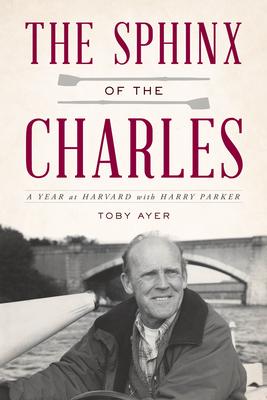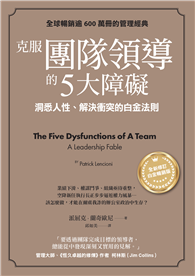Harry Parker was probably the most important figure in American rowing of the past century. His heavyweight crews at Harvard topped the leagues more consistently than any other team (they won the Eastern Sprints regatta, against most of the top college crews, more than three times as often as their nearest rival). From the time they miraculously won the 1963 Harvard-Yale Race at the end of his first year at the helm, his varsity didn’t lose a race for six years, and they didn’t lose to Yale until the Reagan administration. He was the first US National Team coach, and oversaw five Olympic teams. He coached the sons of his great oarsmen from the 60’s and 70’s, and at age 70 was still putting the sons to shame on a bicycle, or running the steps of the Harvard Stadium. He was respected by all, revered and adored by his rowers, and yet no one seemed to know him. The persistent myth was that he hardly said a word, and that his powerful mystique alone made his oarsmen great and their boats go fast. Though a fundamentally compelling figure, Parker’s famous reticence means that few managed to spend much time close to him. Since he made no attempt to explain himself, legends abound: he never got older; he could control the weather; he could walk on water. The Sphinx of the Charles: A Year at Harvard with Harry Parker takes the reader not only inside the Harvard boathouse, but into the coaching launch with Parker. We see how he coached-how many words he actually uttered-as he guided his team through a year of training, and hear about his life in the sport. We see a paradox: Parker remained remarkably constant over the last forty-five years, yet he constantly evolved, changed his style, and used every means at his disposal to build champion crews. The Sphinx of the Charles goes inside the rowing world in a way hasn’t been done before, putting the reader in the passenger seat next to one of the most successful coaches of all time. Parker is a historical icon, part of a tradition that goes back to the beginning of intercollegiate athletics in America. His story needs to be told. The Sphinx of the Charles is fundamentally a chronicle of a year with the Harvard team and a profile of Harry Parker as he was, five years before his death: comfortable in his position as elder and master of the sport, reflective but not nostalgic, aged but nearly impervious to aging. It is driven by Ayer’s own observations of Parker from his seven years of coaching and training at the Harvard boathouse, but especially from one academic year, 2008-9. he shadowed him for a few days every week from September to June, observing practices both on and off the water, and interacting with the team. The present tense of the narrative reflects this immediacy, but also the sense that Parker has endured and continues to endure. And though The Sphinx of the Charles is not a biography in the usual sense, Parker’s life and career were rich and extraordinary and they must be explored. Thus, each chapter carries the reader another month through the training year at Harvard, with vivid descriptions of team practices and a sense of progress towards the spring racing goals. From the passenger seat next to Parker we watch the rowers tackling the daily workouts, honing their mental and physical stamina along with their bladework, always trying to beat their teammates in the crew next to them, under Parker’s watchful eye and ever-present megaphone. Parker makes asides in the launch that the rowers will never hear: remarks about the crews and their progress, passing wildlife, memories of his life in rowing, the river and its history, the sunlight on the water. Intertwined with the narrative are historical perspective, descriptions of the boathouse and the river, profiles of other coaches at Harvard, and impressions from rowers and coaches who worked with Parker over the previous forty-five years. Newspaper and magazine articles reveal how Parker was depicted, and how he revealed
| FindBook |
有 1 項符合
The Sphinx of the Charles: A Year at Harvard with Harry Parker的圖書 |
 |
The Sphinx of the Charles: A Year at Harvard with Harry Parker 作者:Ayer 出版社:Lyons Press 出版日期:2022-04-01 語言:英文 規格:平裝 / 224頁 / 23.29 x 16.03 x 2.11 cm / 普通級/ 初版 |
| 圖書館借閱 |
| 國家圖書館 | 全國圖書書目資訊網 | 國立公共資訊圖書館 | 電子書服務平台 | MetaCat 跨館整合查詢 |
| 臺北市立圖書館 | 新北市立圖書館 | 基隆市公共圖書館 | 桃園市立圖書館 | 新竹縣公共圖書館 |
| 苗栗縣立圖書館 | 臺中市立圖書館 | 彰化縣公共圖書館 | 南投縣文化局 | 雲林縣公共圖書館 |
| 嘉義縣圖書館 | 臺南市立圖書館 | 高雄市立圖書館 | 屏東縣公共圖書館 | 宜蘭縣公共圖書館 |
| 花蓮縣文化局 | 臺東縣文化處 |
|
|
圖書介紹 - 資料來源:博客來 評分:
圖書名稱:The Sphinx of the Charles: A Year at Harvard with Harry Parker
內容簡介
作者簡介
Tobias Ayer has rowed competitively for more than twenty years. He began the sport as an undergraduate at MIT, then continued as a Rhodes Scholar at Oxford. He was a contender for the U.S. national team on three occasions, and has won numerous events including Head of the Charles and the World Indoor Rowing Championships. He currently teaches and coaches rowing at Salisbury School in Connecticut.
|











